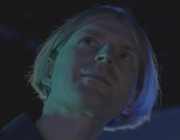Citation:
Julien Olivet, Soon Gang Choi, Salvador Sierra, Tina M O’Grady, Mario de la Fuente Revenga, Florent Laval, Vladimir V Botchkarev, Christoph Gorgulla, Paul W Coote, Jeremy Blavier, Ezekiel A Geffken, Jimit Lakhani, Kijun Song, Zoe C Yeoh, Bin Hu, Anthony C Varca, Jonathan Bruyr, Samira Ibrahim, Tasneem Jivanjee, Joshua D Bromley, Sarah K Nyquist, Aaron Richardson, Hong Yue, Yang Wang, Natalia Calonghi, Alessandra Stephan, Kerstin Spirohn, Didier Vertommen, Maria F Baietti, Irma Lemmens, Hyuk-Soo Seo, Mikhail G Dozmorov, Luc Willems, Jan Tavernier, Kalyan Das, Eleonora Leucci, Alejandro Hochkoeppler, Zhen-Yu Jim Sun, Michael A Calderwood, Tong Hao, Alex K Shalek, David E Hill, Andras Boeszoermenyi, Haribabu Arthanari, Sara J Buhrlage, Sirano Dhe-Paganon, Javier Gonzalez-Maeso, Franck Dequiedt, Jean-Claude Twizere, and Marc Vidal. 12/7/2022. “
Expanding the HDAC druggable landscape beyond enzymatic inhibition.” bioRxiv.
Publisher's VersionAbstract:
Enzymatic pockets such as those of histone deacetylases (HDACs) are among the most favored targets for drug development. However, enzymatic inhibitors often exhibit low selectivity and high toxicity due to the existence of multiple enzyme paralogs, each acting in the context of many distinct multisubunit complexes. Here, we expand the HDAC druggable space beyond enzymatic inhibition by targeting transcriptional repression functions of a whole HDAC complex in vivo. Among the non-enzymatic inhibitors identified, one targets the conserved SIN3 subunit, disrupting its interaction with a DNA-binding protein and recruitment of the complex to specific genes. While conferring phenotypes on par with those of HDAC enzymatic inhibitors, this molecule leads to more selective transcriptomic changes in disease models, affecting expression of up to 100-fold fewer genes. Thus, our results demonstrate that highly selective epigenetic modulators can be identified beyond those affecting enzymatic activity, with the potential of developing therapeutics with decreased toxicity.Competing Interest StatementAn unpublished patent application where J.O., J.C.T., M.V., S.G.C. and S.J.B. are listed as co-inventors has been filed related to this article. M.d.l.F.R. has a consulting agreement with Noetic Fund. C.G. is a co-founder of Quantum Therapeutics Inc. and Virtual Discovery Inc. A.K.S. reports compensation for consulting and/or SAB membership from Merck, Honeycomb Biotechnologies, Cellarity, Repertoire Immune Medicines, Hovione, Third Rock Ventures, Ochre Bio, FL82, Empress Therapeutics, Relation Therapeutics, Senda Biosciences, IntrECate biotherapeutics, and Dahlia Biosciences unrelated to this work. A.K.S. has received research support from Merck, Novartis, Leo Pharma, Janssen, the Bill and Melinda Gates Foundation, the Moore Foundation, the NIH, Wellcome Leap, the Pew-Stewart Trust, Foundation MIT, the Chan Zuckerberg Initiative, Novo Nordisk and the FDA unrelated to this work. All other authors declare that they have no competing interests.